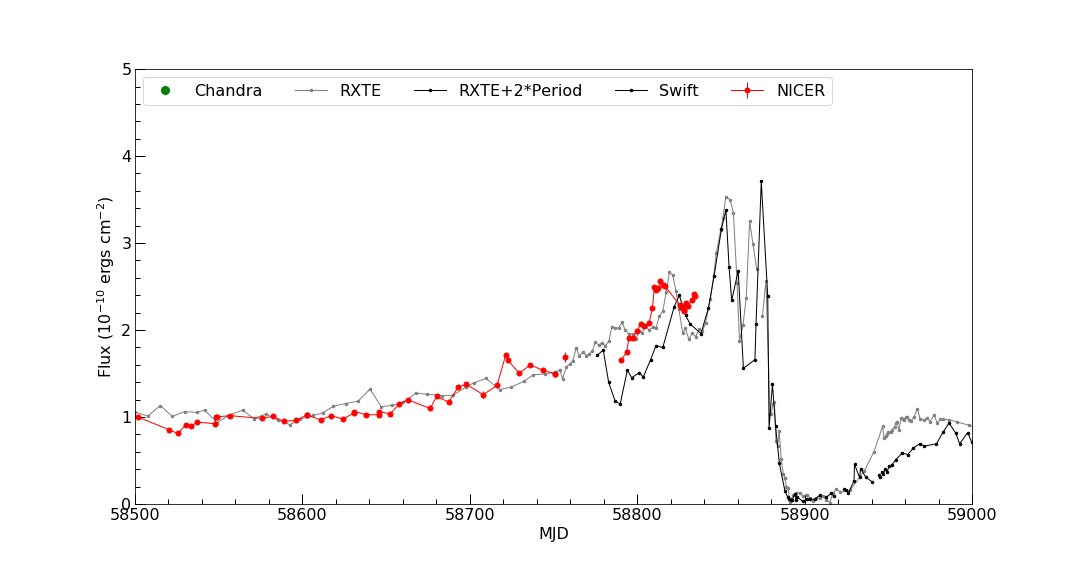NICER / ISS Science Nugget
for December 26, 2019
Eta Carina nearing closest approach - X-ray flares detected by NICER
Eta Carinae is the most luminous and massive star system within 10,000 lightyears of Earth. It's well known for a giant
eruption in the 1840s when, despite its distance, it became the second-brightest star in the sky, and it is widely
expected to be the next supernova in the Milky Way. Eta Carinae is actually a binary system consisting of a very
massive star, nearly 100 times the mass of the Sun, and an unseen companion star which is probably approximately 30
times our Sun's mass. The orbit is unusual, with a period of 5.5 years and a very extreme ellipticity, so that the
stars' closest approach is about one tenth the distance of their maximum separation. The two stars are currently
approaching each other and will reach their minimum separation in February 2020, when the companion passes within about
twice the stellar radius of the more massive star.
Because both stars are very luminous, they are basically blowing
themselves apart, with their powerful radiation driving mass from their surfaces in the form of strong stellar winds.
These winds collide in the space between the two stars, forming a very strong shock front which is hot enough to glow
in X-rays. The X-ray emission brightens as the two stars approach one another, becoming increasingly variable, until it
disappears during minimum separation, enshrouded by the thick wind of the more luminous star.
NICER has been studying the X-ray emission from Eta Carinae since the mission began, providing the best measure to date
of the hot gas producing X-rays through the wind-wind collision, and of the variation of the X-ray emission as the
stars approach their minimum separation. NICER observations are part of a worldwide campaign involving observatories in
space as well as on the ground that span a broad spectral band to better understand the physical situation of Eta
Carinae as it evolves toward its future supernova. Recently, NICER detected the start of the "X-ray Flaring Interval"
which occurs when the stars get close to each other. These flares have been seen in other orbital cycles but not with
the detail NICER provides (see figure).

Figure:
The measured X-ray flux from Eta Carinae as a function of time during the last two cycles in 2009 (gray) and 2014
(black) compared to NICER measurements (red) this past year. The binary star system is expected to reach a minimum
separation in February 2020.
<< Previous
Main Index
Next >>